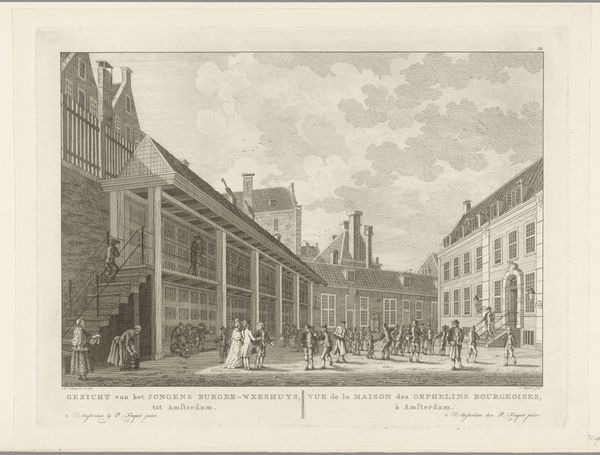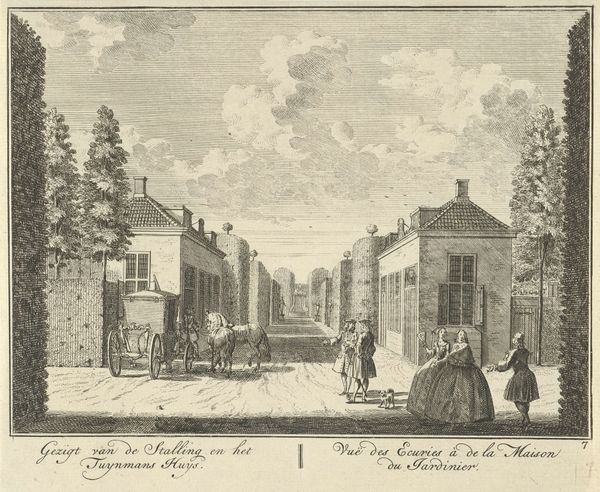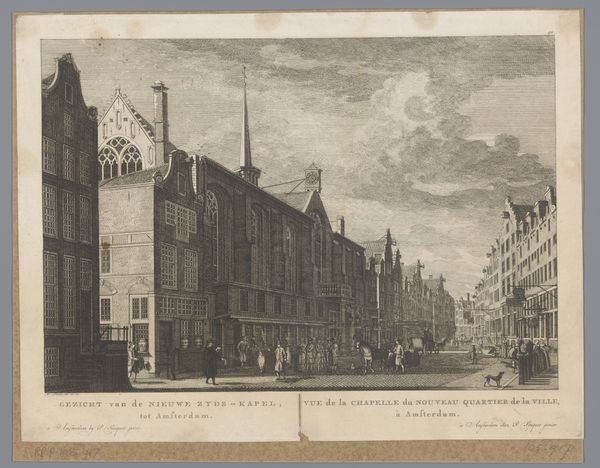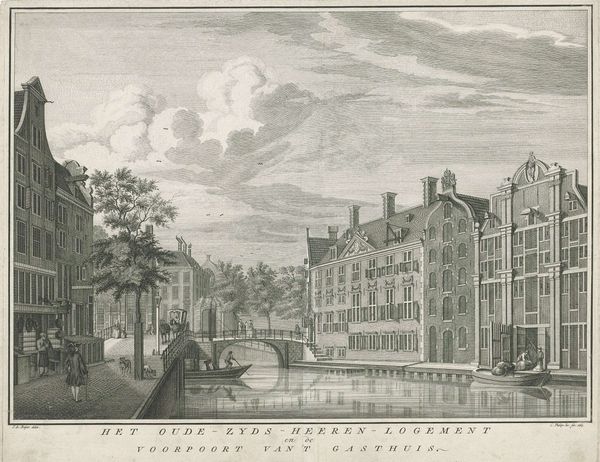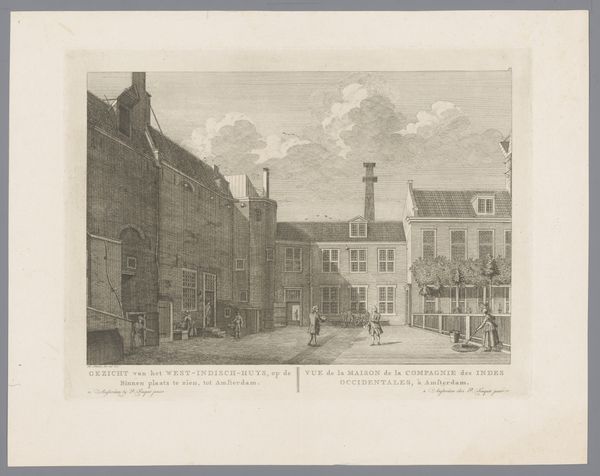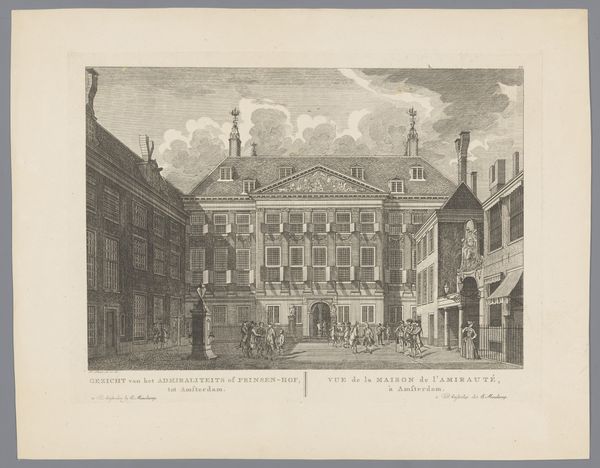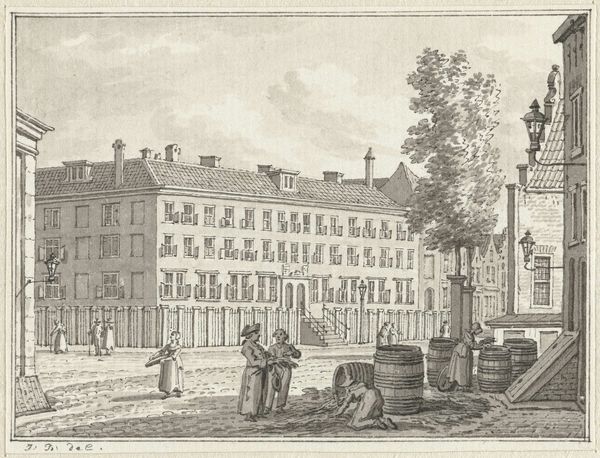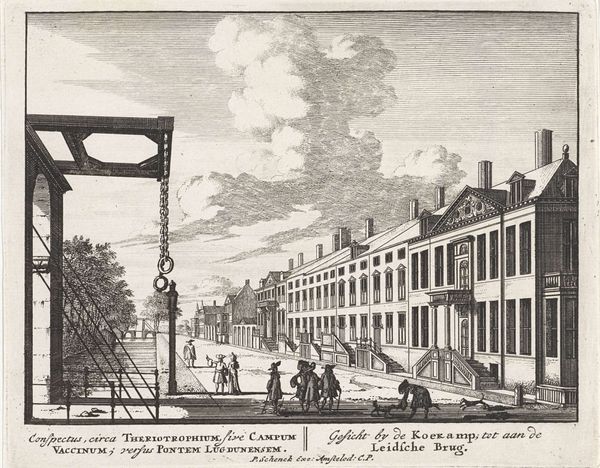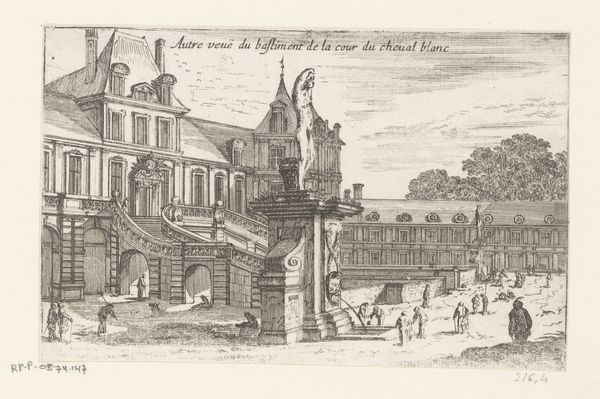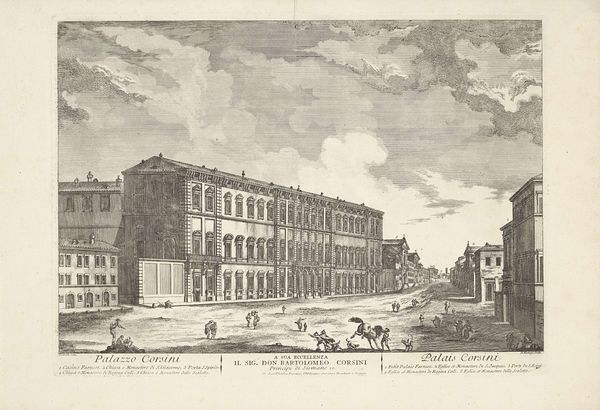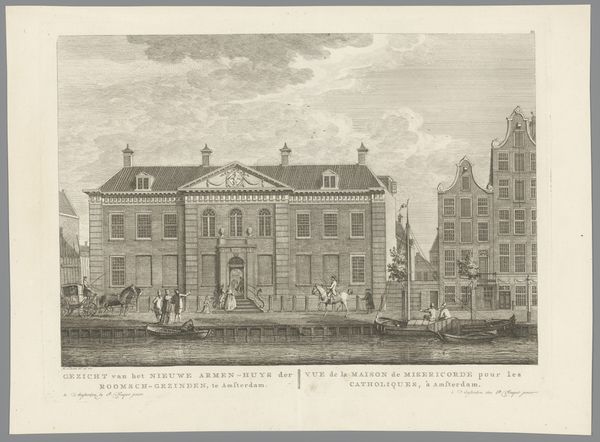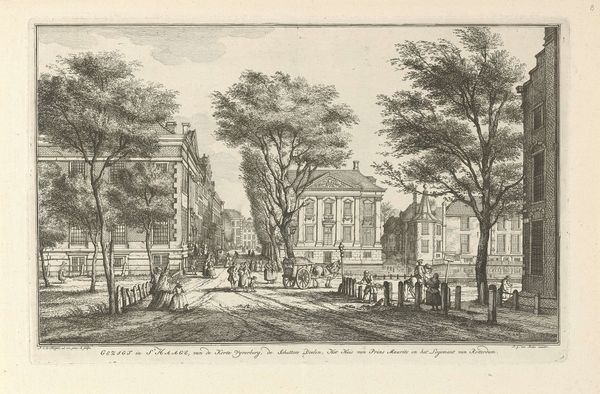
Uitgebrand huis van de Franse ambassadeur te Den Haag, 1782 1782 - 1784
0:00
0:00
drawing, print, ink, engraving
#
drawing
#
aged paper
#
mechanical pen drawing
# print
#
old engraving style
#
sketch book
#
personal sketchbook
#
ink
#
sketchwork
#
pen-ink sketch
#
pen work
#
sketchbook drawing
#
cityscape
#
storyboard and sketchbook work
#
engraving
#
realism
Dimensions: height 93 mm, width 104 mm
Copyright: Rijks Museum: Open Domain
Simon Fokke etched this image of the burnt-out house of the French ambassador in The Hague in 1782. The dominant symbol here is the ruin itself, a stark memento mori reflecting the transience of power. The ruin speaks to the impermanence of human endeavors, a motif that echoes throughout history, from the crumbling temples of ancient Rome to contemporary artists' fascination with abandoned spaces. Consider Piranesi’s etchings of Roman ruins; they elicit a similar sense of melancholy, pondering the fall of empires. Fire, the agent of destruction, has always held a potent symbolic charge. In some contexts, it represents purification and renewal, but here, it signifies chaos and loss, a collective trauma etched into the stone and memory. Fire represents change, passion, and the volatility of human affairs. Fokke captures this emotional state, reminding us that even the most imposing structures are vulnerable to destruction, and how such devastation can deeply affect the collective psyche. This image invites us to consider the cyclical nature of history, where destruction and rebirth continuously reshape our world.
Comments
No comments
Be the first to comment and join the conversation on the ultimate creative platform.
